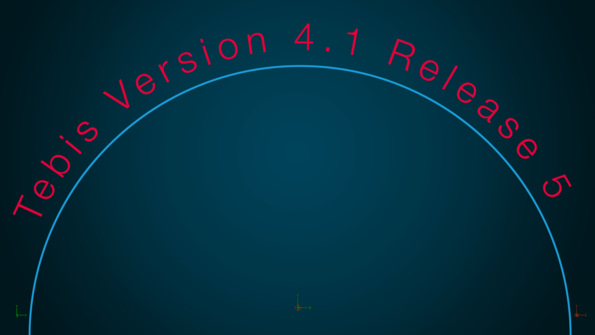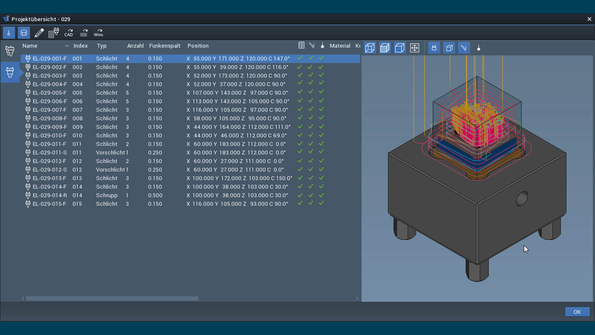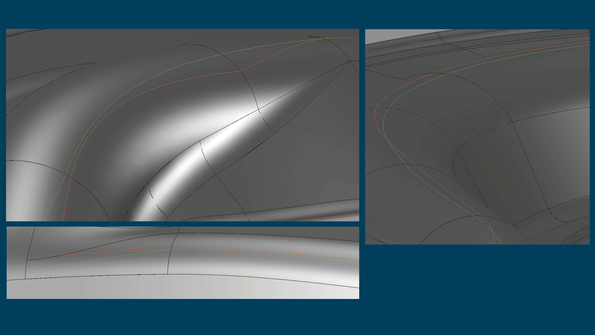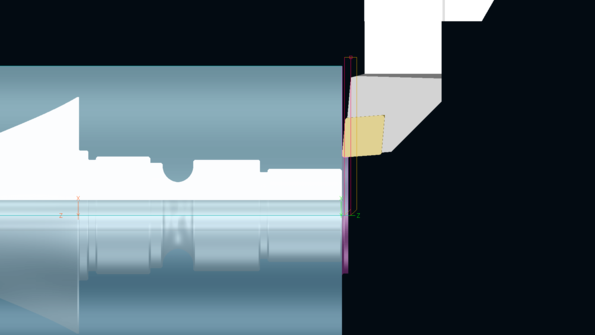-
Software
-
CAM software
- Tebis Automill
- CNC programming
- CNC automation
- CNC simulator
- Multiple setup
- Robotic machining
- CNC drilling
- Deep-hole drilling
- Combined turn-milling
- CNC turning
- Turn-milling
- 2.5D milling
- 3D milling
- 5-axis milling
- Slot milling
- Trimming
- HPC milling
- HFC milling
- Circle-segment cutters
- Sinker EDM
- Wire EDM
- 3D laser cutting
- Laser hardening
- Laser weld cladding
- CAD software
- CAQ software
- MES software
- Products
-
CAM software
- Services
- Consulting
- Sectors
- References
- Company
- News

-

Tebis 4.1 Release 5
Fast, convenient and highly automated
Faster processes, simpler operation, greater automation, more flexibility, high quality, improved template technology – Tebis 4.1 Release 5 provides many new and improved functions as well as optimized process flows that will help you reach your goals faster in your day-to-day work. Tebis CAD, Tebis CAM and real manufacturing are drawing even closer together.
Overview of benefits:- CAM Programming time is significantly shorter
- Better results are achieved more quickly
- CAM programmers can respond to changes faster
- CAM programming and manufacturing are safer
- New personnel can be trained sooner
Take a look at the recording of our new product webinar (german). Or book the one-day update training right away.
View webinar (German) and / or Book update trainingCAD – 3D design
Easily create text with improved user guidance
Easily replace objects
Parametric objects like axis systems and geometric objects that are used by other objects can now be quickly and easily replaced with other objects in a function Specific objects or groups of objects can be selected.Original object.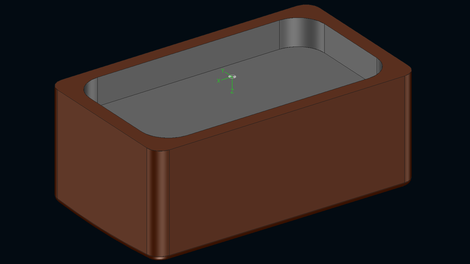 All dependent objects have been replaced.
All dependent objects have been replaced.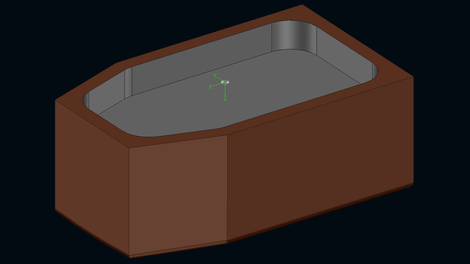 Only the inside contour was replaced.
Only the inside contour was replaced.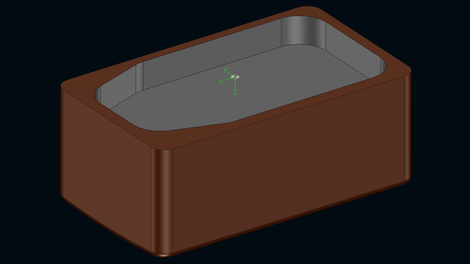
CAD – Electrode design
New project overview: All information at a glance
All the relevant information on all electrodes can now be displayed in the optimized project overview: You can see if the necessary milling programs and measuring and eroding paths have been completely generated, you can check for complete output of the NC documentation, and you can show and hide individual elements like electrode parts and measuring paths in the view window – for an improved overview.CAM – data processing
Quickly and easily generate smooth center curves
The "Color radii and create center curves" function has been completely revised. High-quality tangential center curves that are needed for tasks like preparing for laser hardening can now be generated very conveniently and quickly. Manual preparatory work is greatly reduced.
The optimal end of the curve can also be selected right in sharp radius runouts.CAM – Milling
Highly automated and targeted processing of residual stock areas
The new "Machining residual stock combined" function specifically detects residual stock areas in fillets, corner blendings and cavities and automatically splits these areas. The milling areas that will be processed in the subsequent NCJob are automatically transferred. The individual areas are optimally sorted and the optimal connection paths are generated – all completely automatically. You achieve top results without having to intervene interactively a single time.Safe 5-axis simultaneous roughing
High-quality 5-axis simultaneous toolpaths for re-roughing with ball cutters can now be quickly and easily programmed: You can create a 3-axis roughing program and then convert it to 5-axis simultaneous machining in "Simultaneous avoidance" mode – the optimal tilt directions are determined automatically. The tool paths are completely collision-checked and the current blank is fully accounted for.
This option is especially suitable for manufacturing deep cavities with the shortest possible tools in soft materials: for example, for electrode machining.
You can interactively adjust the tilt direction as needed: for example, by placing vectors.Fully exploit machine potential in adaptive re-roughing
Optimized connections are now generated even for re-roughing upwards. The connection feed can be defined based on the machine in the strategy – retract movements are reduced and the movements are significantly more consistent. This results in shorter machining times. The highest possible machine feed rate is fully exploited: Depending on the geometry, this enables maximum speeds as in rapid feed movements even at machining feed rate.
Fast 2.5D machining with different stock allowances
Different stock allowances can now be assigned very conveniently in an NC job in 2.5D machining.
For example, "Ignore hidden surfaces" mode can be used to assign a larger stock allowance for adjacent protected surfaces than for the planar and contour surfaces to be machined – with no effect on path generation. The tool check is performed with the stock allowance for the machining surfaces. In contrast, the stock allowance for the adjacent protected surfaces is ignored. Maximum safety is ensured: The stock allowance for the protected surfaces is accounted for when calculating the connecting paths.
Programming with different stock allowances is also extremely simple: Just select the complete part only – the system takes care of the rest.
This procedure is especially recommended for machining large forgings in die manufacturing in conjunction with automated feature machining.CAM – Automation
Change feature conveniently and flexibly
View video / contact formPlease select the Preference cookies to activate the display.Activate cookiesThe "Create feature group" and "Cut bore features" functions have been completely revised. Because the feature groups and feature cuts are now parametric, working with features is now highly flexible: You can remove individual features from the group or add more features to the group. A special highlight: You can change the machining sequence for grouped or cut features with a click of the mouse – without having to break the group or the cut. Programming time is significantly shorter.Quickly and easily modify NCJobs without recalculating
View video / contact formPlease select the Preference cookies to activate the display.Activate cookiesComponent surfaces, protected surfaces and tools and machines can now be replaced quickly and easily even after NC calculation – and all toolpaths are retained. Programming time is significantly shorter. You still retain full control: For example, you can define for critical geometric changes whether the original and modified elements are to be compared for precise geometric equivalence or accounting for a specified tolerance. You can decide for yourself if the NCJob should be reset based on the results.
Machine changes are also possible without recalculation between technology groups or with activated head collision avoidance.Improved geometry analysis in automated machining with free-form features
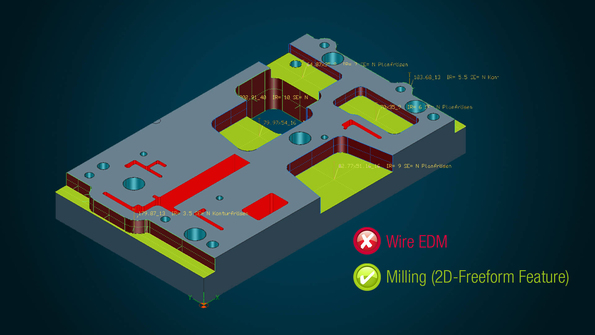 Automatically exclude areas from milling (marked in red).In Tebis, the entire part can be analyzed for its geometric properties: Geometric elements that can be manufactured with standardized manufacturing sequences (NCSets) are automatically linked to appropriate features.
Automatically exclude areas from milling (marked in red).In Tebis, the entire part can be analyzed for its geometric properties: Geometric elements that can be manufactured with standardized manufacturing sequences (NCSets) are automatically linked to appropriate features.
This geometry analysis has now been extended : A limit for the minimum inside radius can now also be stored in the NCSet for free-form features: The nominal diameter is assigned specifically for the respective tool. The key advantage: Geometry areas that can’t be milled because the corner radii are too small and should be instead be eroded, for example, are already excluded in feature identification.
In addition, this limit can also be used to quickly search for tools based on variable tool descriptions. Only tools that precisely fit the geometry are selected. This saves you a lot of time – because manual intervention is no longer necessary for tool selection.
CAM – Lathe
Represent tool references on a 1:1 basis in the tool library.
The options for selecting standard references for turning tools have been greatly expanded. The digital and real worlds are drawing closer together: All references and reference sectors that can be selected in the control are also represented in the digital tool library. Each reference can be stored as a standard reference for the corresponding machining tool.
For CAM programmers, this means greater flexibility and simplified operation: The standard reference is automatically applied to the NCJob. However, the reference can also be subsequently adjusted as needed in the NCJob. The sector can also be specified independent of the cutter geometry for special tools like button tools.
A further major advantage: The tool reference can now also be represented in "Measurement position" mode – i.e., in the way that the tools are represented in the machine control. The control automatically calculates the resulting tool reference for tilted machining.
The tool setter also benefits enormously from these extensions: Because all the necessary information is stored in the NC documentation and in the CAD/CAM software, they can immediately see how to set up the tool in the zero position.Easily rough the blank and efficiently define areas
The new "Pre-turning component" strategy can now be used to quickly and easily generate toolpaths for the first longitudinal and face cuts. All you need to do is specify the part: The starting point is automatically determined on the appropriate blank side to account for cutter orientation.
When roughing contours, you can also define the areas to be machined for optimal traverse movements and now very conveniently achieve more precise results : Now the boundaries can also be created parallel to the main axes with just a few mouse-clicks. The corresponding specifications can be integrated in the NCJob template for automated CAM programming.CAM – Job planning
Set up components automatically
View video / contact formPlease select the Preference cookies to activate the display.Activate cookiesSet up electrodes fully automaticallyThe workpiece and clamping devices can be positioned safely and automatically on the machine table based on preconfigured connection points – when clamping electrodes, this even works fully automatically and accounts for the holder. This significantly reduces programming work. Individual elements can be quickly and easily replaced later.

